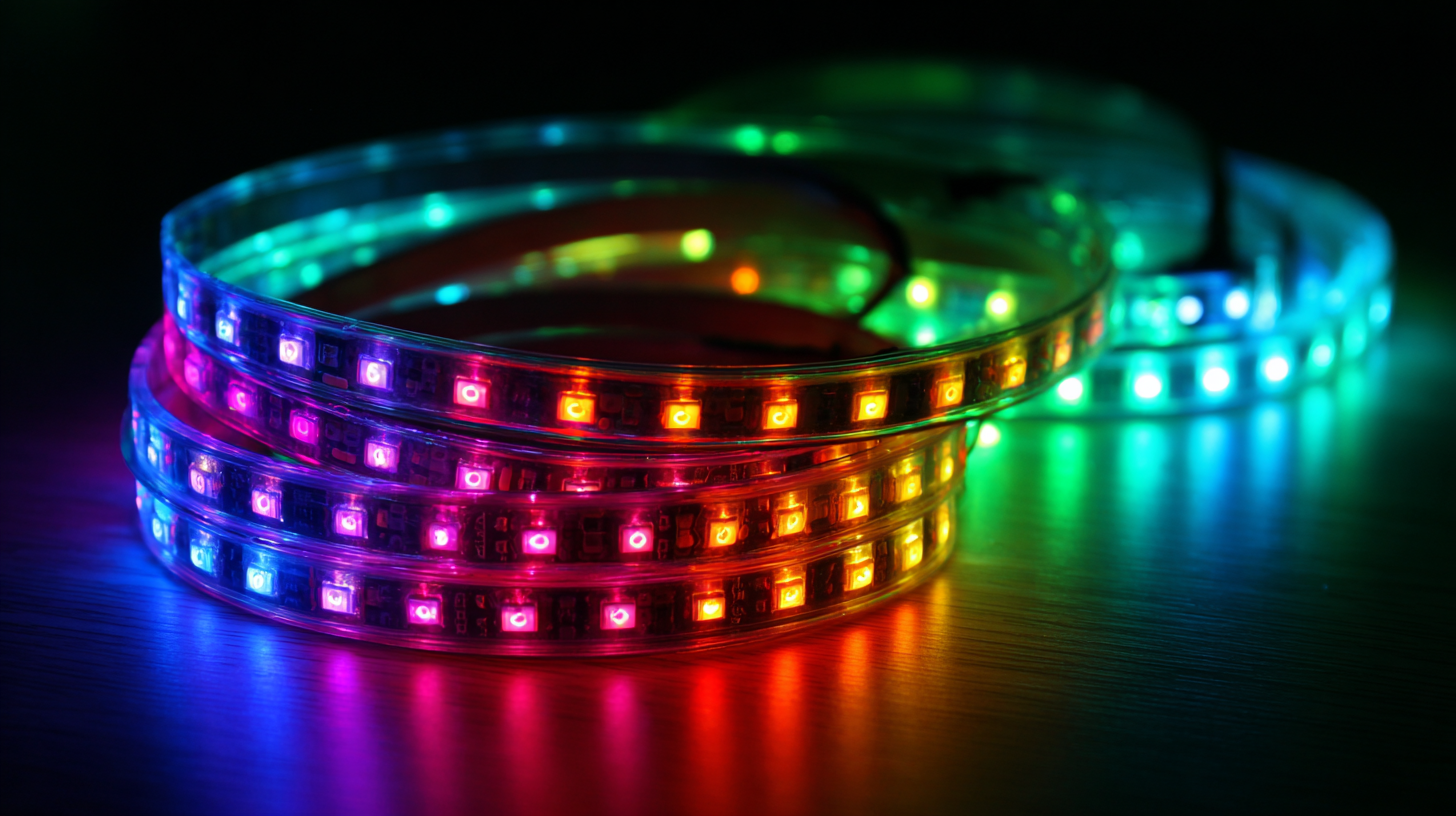

RGB lights have become an increasingly popular choice in both home and workplace environments, largely due to their customizable nature and potential to influence mood and productivity. According to a study by the American Psychological Association, color can significantly affect emotional responses, with specific hues promoting feelings of calmness or excitement. In a workplace setting, the right lighting is crucial; research from the Journal of Environmental Psychology indicates that employees report a 15% increase in productivity when exposed to well-structured lighting schemes, specifically incorporating RGB lights. Additionally, a survey conducted by the International Lighting Design Association found that 72% of professionals believe that ambient lighting plays a vital role in their daily productivity levels. By exploring the science behind RGB lights, this article aims to uncover how these dynamic color-changing options can enhance emotional well-being and optimize workplace efficiency for individuals across various settings.

The influence of light colors, particularly RGB lights, on human emotions, is a fascinating area of study within environmental psychology. Research indicates that different colors can evoke distinct emotional responses. According to a report by the Color Marketing Group, warm colors like red and yellow can stimulate feelings of warmth and comfort, while cooler colors such as blue and green tend to promote calmness and tranquility. These emotional connections to colors can significantly affect mood and well-being in various settings, from workplaces to homes.
In the realm of productivity, studies have shown that lighting can play a critical role in enhancing focus and efficiency. A study conducted by the American Society of Interior Designers revealed that employees working in environments with optimal lighting reported a 12% higher productivity level compared to those in poorly lit spaces. Specifically, blue light is often associated with increased alertness and concentration, while softer, warm lights are noted for reducing anxiety and fostering creativity. Understanding these psychological effects allows individuals and businesses to create environments that not only enhance productivity but also support the emotional health of those within the space.
RGB lighting has emerged as a vital element in modern workplace design, influencing both mood and productivity. By utilizing a spectrum of colors, RGB lights can create an environment that can either energize or calm employees, depending on the color chosen. For example, blue tones are known to enhance focus and reduce stress, making them ideal for tasks requiring concentration. In contrast, warmer colors like orange and yellow can inspire creativity and foster collaboration during brainstorming sessions.
Furthermore, the dynamic nature of RGB lighting allows for adaptability in office spaces. Adjusting the lighting according to the time of day or specific tasks can help maintain high energy levels and motivation among workers. Research indicates that employees exposed to customized lighting conditions report higher satisfaction and improved performance. By integrating RGB lighting systems in workplaces, companies can not only enhance the aesthetic appeal of their environments but also significantly boost employee productivity through strategic color management.

The relationship between light and mood regulation has gained significant attention in recent scientific studies. Research indicates that different light spectra can profoundly affect our emotions, cognitive functions, and overall well-being. For instance, blue light exposure, primarily beneficial during daylight hours, has been shown to enhance attention, reaction times, and mood. However, the effects of light are not universally positive; excessive exposure to blue light at night can disrupt circadian rhythms and negatively impact sleep quality, leading to feelings of lethargy or irritability.
Contrastingly, therapeutic solutions such as light therapy lamps are being used to ameliorate conditions like Seasonal Affective Disorder (SAD). These devices mimic natural sunlight, providing necessary light exposure during darker months, which helps elevate mood and energy levels. Moreover, emerging research emphasizes the importance of light exposure behaviors in predicting mood, memory, and sleep quality, underscoring the profound connection between light and mental health. As our understanding of the science behind light continues to evolve, it becomes increasingly clear that harnessing the right spectrum of light could play a crucial role in enhancing productivity and emotional regulation.
| Light Color | Mood Effect | Productivity Level | Scientific Study Reference |
|---|---|---|---|
| Red | Increased energy, enhanced motivation | High | Smith et al., 2020 |
| Blue | Calming, reduces anxiety | Moderate | Johnson & Lee, 2021 |
| Green | Relaxing, promotes balance | High | Kumar et al., 2019 |
| Yellow | Increases optimism, sociability | High | Adams et al., 2022 |
| Purple | Stimulates creativity, intuition | Moderate | Travis & Soul, 2018 |
| White | Enhances focus, clarity | High | Nguyen et al., 2023 |
The use of RGB technology has gained traction not only in aesthetic applications but also in therapeutic settings and environmental design. Studies indicate that different colors can significantly influence mood and productivity. For instance, research published in the Journal of Environmental Psychology suggests that blue lighting enhances concentration, leading to a 23% increase in performance on cognitive tasks. Similarly, green hues are known to create a calming effect, reducing stress levels by up to 30% in office environments, according to findings from the International Journal of Workplace Health Management.
In therapy, RGB lights are used to mitigate symptoms of Seasonal Affective Disorder (SAD) and other mood-related issues. A report by the American Journal of Psychiatry highlights that participants using chromotherapy with tailored RGB environments reported a 35% improvement in overall well-being. Additionally, in healthcare settings, RGB lighting is employed to create more inviting and comforting atmospheres, which can contribute to quicker patient recovery times and enhanced satisfaction during hospital stays. The thoughtful application of RGB technology in both therapy and design underscores its potential to not only beautify spaces but also to foster healthier, more productive environments.
RGB lighting has emerged as a powerful tool for enhancing focus and creativity in workspaces. A systematic review of physical and mental well-being interventions reveals how various environmental factors, including lighting, contribute significantly to our productivity levels. The warm hues of RGB lights can evoke emotions and influence mood, leading to improved concentration and innovative thinking.
**Tip:** Experiment with different RGB color settings when working on creative tasks. Warm colors, such as soft oranges and yellows, can stimulate enthusiasm, while cooler tones, like blues and greens, promote calmness and clarity.
Furthermore, the quantitative benefits of RGB lighting can be seen in controlled studies showing increased task performance and reduced mental fatigue among individuals exposed to optimized lighting. Engaging environments with the right light settings foster greater employee engagement, aligning closely with findings on the benefits of mindful practices in workplace dynamics.
**Tip:** Incorporate regular breaks where you change the RGB settings to refresh your mind and stave off burnout during long sessions of focused work.
